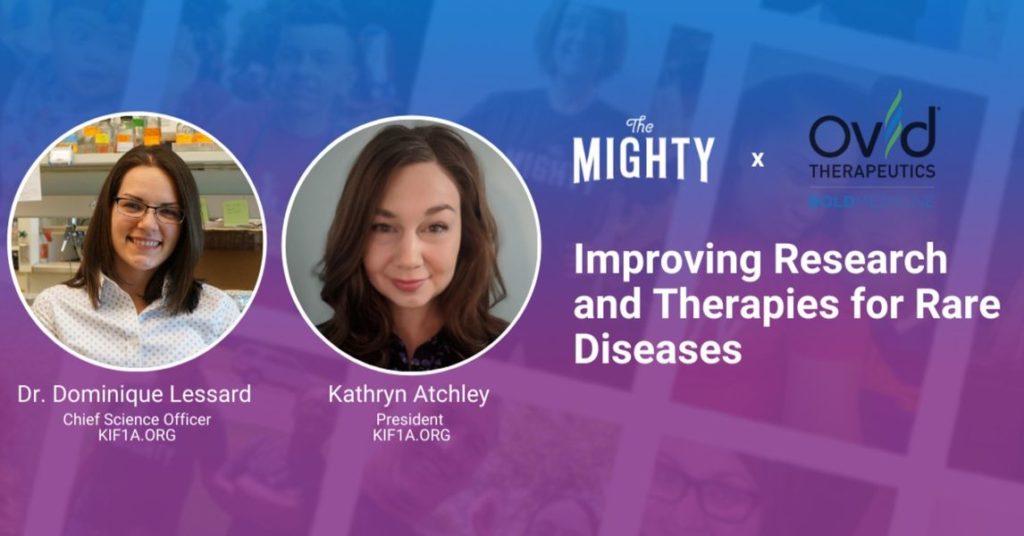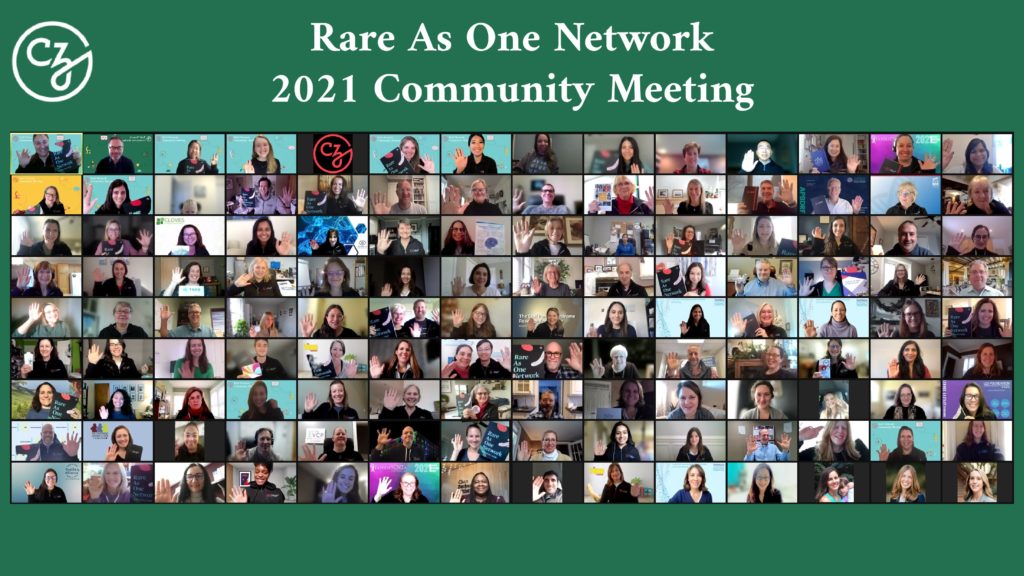#ScienceSaturday posts share relevant and exciting scientific news with the KAND community. This project is a collaboration between KIF1A.ORG’s Research Engagement Team Leader Alejandro Doval, President Kathryn Atchley, Science Communication Volunteer Aileen Lam and Chief Science Officer Dr. Dominique Lessard. Send news suggestions to our team at impact@kif1a.org.
Dr. Dom & Kat Chat with The Mighty Community
KIF1A.ORG’s Dr. Dominique Lessard and Kathryn Atchley joined The Mighty community on Facebook Live to discuss improving research and therapies for rare disease. You can watch the recording on the Facebook page for Rare Disease on The Mighty here! This conversation was made possible by our friends at Ovid Therapeutics, who are dedicated to finding meaningful therapies for rare neurological diseases like KIF1A Associated Neurological Disorder.
The Mighty provides a supportive platform for patient advocates to amplify their voices. Check our their website at TheMighty.com, where you’ll find blog posts and conversations from fellow rare disease advocates. We know the KIF1A.ORG family community has powerful stories to share. If you’re interested in writing a story for The Mighty, contact us at impact@kif1a.org!

KIF1A.ORG Team Attends CZI Rare As One Event
This week the KIF1A.ORG Team had the honor of attending the Rare As One Network 2021 Community Meeting, hosted by the Chan Zuckerberg Initiative. KIF1A.ORG was accepted into the first RAO cohort of 30 rare disease organizations in 2020 and received a $450,000 USD capacity building grant from CZI to advance our patient-led mission to find treatments and cures for KAND. In addition to this significant funding support, over the last two years, KIF1A.ORG has been participating in robust training provided by CZI and their collaborators on topics ranging from drug repurposing to financial sustainability to operational best practices. During this community meeting, we welcomed 20 new patient-led, science-driven organizations to the Rare As One Network. To close the meeting, Kat joined a panel with two other Cycle 1 RAO leaders to share our experience and advice with our new Cycle 2 collaborators. We can’t wait to see the collective impact this network achieves as we drive progress against rare disease.

KIF1A-Related Research
Initiation of ensemble kinesin-3 motility is regulated by the rigidity of cargo-motor attachment
Have you ever heard the saying “teamwork makes the dream work”? It turns out that teamwork is a key process in making cargo transport in our neurons work as well! The idea of molecular motor proteins (like KIF1A) inside of our neurons working together to help transport cargo inside of cells is not a new concept and when we take a step back to think about this concept, it makes a lot of intuitive sense! Neuronal cargo must be transported extremely long distances along neuronal axons – this is a high risk, high reward journey! Having multiple motor proteins attached to cargo offers a sense of redundancy or safety; in a case where a motor protein was to fall off a microtubule track, be confronted with an obstacle, run out of gas, etc., there could be another motor nearby to pick up the slack and continue on with cargo transport to complete the mission.
While we know that motor proteins in general can work in teams, KIF1A’s role in the process remains unclear. Luckily, the pre-print article we are sharing today helps us answer this question by investigating the behavior of artificially engineered KIF1A motor teams. Specifically, this study focuses on how KIF1A motors are linked or attached to cargo and how this linkage may impact KIF1A team cargo transport. In other words, are there differences in cargo transport between KIF1A motors that are loosely linked to cargo (more flexible) vs. KIF1A motors that are tightly linked to cargo (more rigid)? As it turns out, the answer is yes! Looking for a resource to help you visualize how molecular motor proteins can work together to transport neuronal cargo? Check out one of our favorite videos below!
Rare Roundup
Celebrating Celia Grace: Child with rare disease makes history with groundbreaking gene therapy
“What would you think if I said your daughter was about to make history?” This thought-provoking question became a reality for a family just a few short months ago. In September 2021, 4-year-old Celia Grace Hamlett became the first person in the United States to receive a gene therapy treatment for metachromatic leukodystrophy (MKD). Like many in the rare disease community when faced with a diagnosis, Celia Grace’s family immediately started looking for answers, for treatment, and for a cure. Luckily, Celia was a perfect candidate for a new type of treatment in the rare disease and broader medical community: gene therapy. Click the button below to read more about Celia Grace’s story, how she because a pioneer gene therapy patient at the M Health Fairview Masonic Children’s Hospital, and hear how she is doing now.

